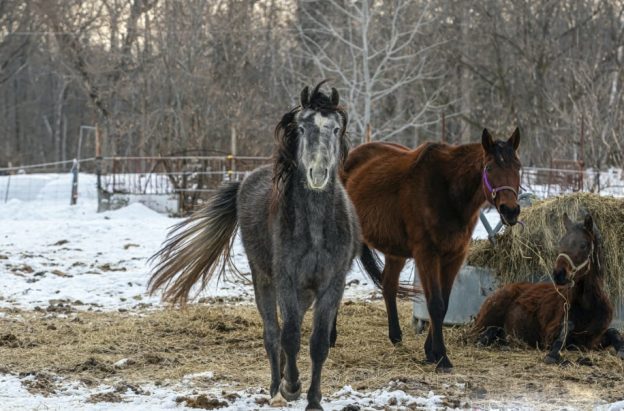Autumn is a time when horse owners need to be especially vigilant with paddock management. The main thing to look out for is acorns, as well as oak leaves and branches. Horses may resort to eating them, especially if grass or horse feed is short. However, they are poisonous. If a horse has a low tolerance or consumes a high volume, they can suffer acute toxicity. It can lead to serious health problems, and may even be fatal.
Toxic
The problem with acorns, oak leaves, and branches from oak trees is they contain two harmful substances. Firstly is gallic acid. While it can be beneficial to humans, it can damage red blood cells in horses. Secondly is tannic acid. Again, it has benefits for humans as well as many industrial applications, but it can damage the intestines and other organs of horses.
What you need to do is keep a close eye on horses, especially in autumn when trees typically shed acorns, leaves, and branches. It’s also a good idea to check beforehand in case it has begun early because of the weather. Plus, be careful at the start of winter when grass will be shorter and horses may look for other food.
There are a number of key symptoms to keep an eye out for. Common ones include a loss of appetite, dehydration, constipation, and depression. If horses suffer mouth ulcers or colic, they can be signs of toxicity too. The most serious symptoms are diarrhoea and blood in urine. They can indicate damage to the liver, kidneys, and intestines.
What to do?
As we said above, paddock management is absolutely crucial. It’s also vital that you ensure you provide sufficient horse feed, including a steady supply of high fibre forage. The goal should be to make sure horses won’t go hunting for other food.
One of the best things to do is make sure there are no oak trees on or near the paddock. That massively reduces the risk. Additionally, it is a good idea to have a look nearby to see if there are any. If so, keep an eye out because the wind can easily blow leaves, branches, and acorns large distances.
If you do find there are oak trees in or near a paddock, make sure horses can’t get close to them. Fence them off, ensuring fences are high enough that a horse can’t reach over.
An interesting thing you can do is release pigs on to the paddock in autumn before horses use it. This is a classic strategy that is still popular today in places like the New Forest to protect wild herds. The pigs will eat acorns and various other tree nuts. As a result, there won’t be as many for horses to potentially consume.
Talk to us about horse feed
JS Hubbuck Ltd is a wonderful resource if you have concerns about horse health and other animals, including sheep and cows. We provide a number of quality products, including feeds and wormer. Even more importantly, we have extensive product knowledge. It means clients can come to us with various questions and get useful advice. This can improve animal health and also reduce the chance of buying the wrong things or misusing products.
So, if you need horse feed or any other resources, speak to us. We’re here to assist and ensure you have happy, healthy animals.

